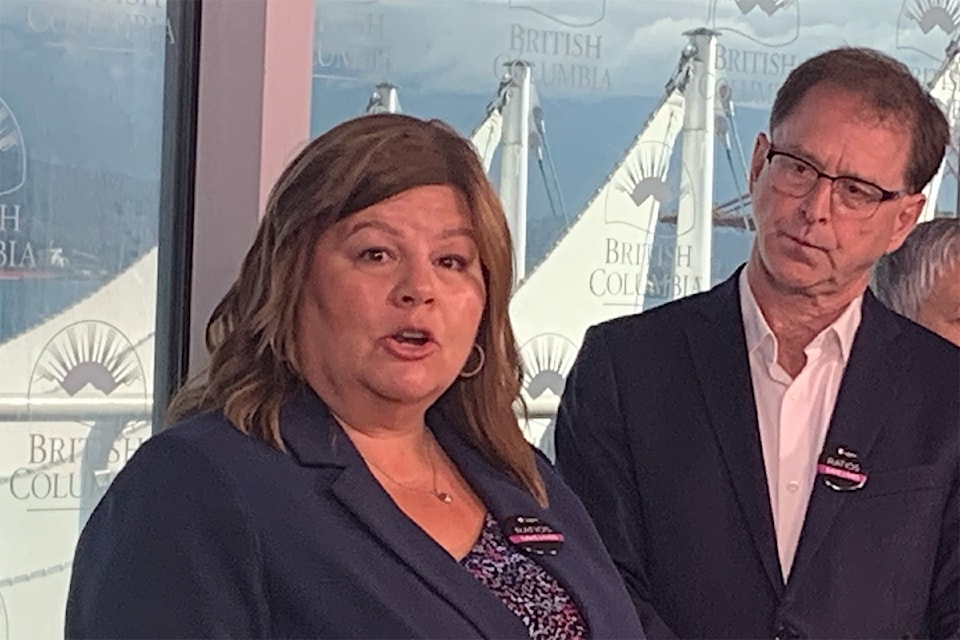The head of the B.C. Nurses' Union says her profession faces many challenges, but newly established nurse-to-patient ratios and the broader plan around them have produced some improvements.
"I'm not going to sugar-coat anything," BCNU President Adriane Gear said. "It's really challenging to be a nurse in B.C., but are we seeing incremental, sustained positive change? I would say in many areas, not all areas. This is about providing a plan to nurses."
Gear made these comments as part of an announcement Wednesday in Vancouver, where Premier David Eby and B.C. Health Minister Adrian Dix announced new nurse-to-patient ratios for hospital and non-hospital settings on top of ratios first announced in March.
B.C. is the first province in Canada with such ratios in joining Australia and California. The ratios are not only embedded in the BCNU's collective bargaining agreement, but are also part of a $300 million strategy to recruit 8,000 new nurses over the next four years.
"This is a momentous investment, creating a stronger, sustainable nursing workforce for years to come," Dix said. He said the strategy stacks on an international recruitment campaign, financial incentives in high-need-areas, a reduction in the reliance on agency nurses, improved scheduling and other steps to prevent emergency-room closures. Government has also created some 600 new nurse training seats.
/
RELATED: Nurse-to-patient ratios unveiled as B.C. pumps $237M into nurse incentives
Wednesday's announcement comes against a backdrop of challenges, including ER closures, caused by demographics and other factors. The state of health care and the upcoming election campaign coloured Wednesday's announcement.
"I don't think it's any secret, I think most people know that our health care system is facing big pressures," Eby said in pointing to B.C.'s aging demographics. Highlighting recruitment and training efforts, Eby said B.C. is "finally starting to turn the corner on some of these things" and this is not the time to reverse course.
Gear said the new ratios draw on evidence that shows their positive effects in not only improving quality of patient care, but also on the retention and recruitment of nurses. But she also called for patience.
"I don't think anyone is under the illusion that this is going to happen overnight," Gear said in alluding to the fact the ratios will take four year to implement. "We are going to make sustained progress over time. We need to create some pressure and accountability in the system to make sure that there is a steadfast commitment to this and I'm confident that we can do this."
Gear described the ratios as a necessary, but insufficient step to address working conditions. But if she was trying to temper expectations, she also praised supportive managers and endorsed the general direction of current efforts.
"What we are doing today, I hope, is inspiring some optimism and for me, that's hope with a plan."
Some details of this plan still need to be worked out. The ratios will apply to the "majority of hospital settings" and Dix said need to reflect the "unique needs of every rural community and implement ratios that best meet the unique needs of their site."
A list of ratios is available here.



